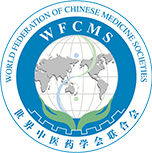Integrated miRNA and mRNA analysis identified potential mechanisms and targets of qianggan extracts in preventing nonalcoholic steatohepatitis
Release time: Jun 29,2022
Reading volume: 933
Abstract :
Objective: Qianggan (QG) extract is a patented traditional Chinese medicine that has been widely used for the clinical treatment of nonalcoholic steatohepatitis (NASH). However, its mechanism remains unclear. Methods: The efficacy of QG was evaluated in mice with methionine-and-choline-deficient diet-induced NASH by measuring serum alanine aminotransferase, aspartate aminotransferase, and alkaline phosphatase levels and by H and E staining of liver sections. Microarray and bioinformatics analyses were performed to obtain hepatic microRNA (miRNA) and mRNA expression profiles and to mine potential mechanisms and therapeutic targets. Furthermore, representative miRNA and mRNA expression levels were validated by quantitative real-time polymerase chain reaction (qRT-PCR). Results: QG extract significantly improved NASH. Twelve differentially expressed miRNAs and 1124 differentially changed mRNAs were identified as potential targets of QG extract. Integrated analysis detected 976 miRNA–mRNA regulatory pairs, and networks including 11 miRNAs and 427 mRNAs were constructed by Cytoscape. Hub nodes including miR-7050-5p, miR-212-3p, Bcl2l11, and Kras were filtered out. Gene Ontology and Kyoto Encyclopedia of Genes and Genomes pathway analyses revealed that 427 mRNAs were enriched in pathways including apoptotic process, immune response, FoxO signaling pathway, and natural killer cell-mediated cytotoxicity. We also constructed a protein–protein interaction network with 254 nodes, and identified hub genes including Kras, Fasl, and Ncam1. Finally, the results of qRT-PCR were in good accordance with microarray data. Conclusion: This study identified important hub miRNAs and mRNAs involved in the mechanism of QG extract and which might provide potential therapeutic targets for patients with NASH.
Keywords: Fatty liver; gene regulatory networks; microarray analysis; Qianggan extract; Traditional Chinese Medicine

